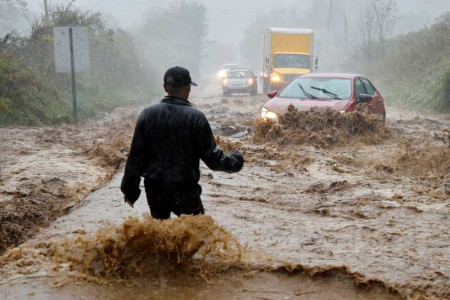It was the most powerful storm on record to hit Florida's Big Bend and moved north into Georgia and the Carolinas after making landfall overnight on Thursday.
Although Helene has weakened significantly, forecasters warn that high winds, flooding and the threat of tornadoes would continue.
Roads and houses were submerged on Friday, with one family describing to the BBC News how they had to swim out of their home to safety. Insurers and financial institutions say damage caused by the storm could run into the billions of dollars.
The eye of Helene, which had been a Category Four storm, came ashore on Thursday night.
Helene remained a hurricane for six hours after it made landfall, according to Federal Emergency Management Agency (FEMA).
The National Hurricane Center (NHC) said a storm surge - heightened water levels mostly caused by high winds blowing water towards shore - reached more than 15ft (4.5m) above ground level across parts of the Florida coast.
The NHC said the surge should subside on Friday but that the threat from high winds and flooding would persist, including possible landslides.
Up to 20in (50cm) of rain is still possible in places.
The hurricane is the 14th most powerful to hit the US since records began. At approximately 420 miles (675 km) wide, it is behind only two other hurricanes - Ida in 2017 and Opal in 1996, both of which were 460 miles wide.
Because of its sheer size, the impact of strong winds and heavy rain have been widespread across Florida, Georgia, Tennessee and the Carolinas.
At least eight people have died in Florida since Friday, including at least five people in Pinellas County, the county's sheriff, Bob Gualtieri said.
Pinellas County includes the city of St Petersburg on Florida's Gulf Coast.
Florida Governor Ron DeSantis said one person died after a road sign fell on their car and another when a tree fell on a home.
BBC


